Text
The University of the Philippines College of Fine Arts (CFA), where the College of Veterinary Medicine (CVM) used to be (CVM gradually moved to UP Los Baños in June 1983). CFA is the country's oldest educational institution in design and the arts. Its origins preceded the foundation of the university, dating back to the early 19th century when the Academia de Dibujo y Pintura, the country's first art school, was established on 8 October 1823, in Binondo, Manila, by Damian Domingo with the assistance of La Sociedad Económica de Amigos del Pais. Although it was temporarily closed in 1834, the Spanish government revived it in 1845 with the patronage of Queen Isabela II.
The reestablished Academia welcomed Spanish art professors who introduced European Classical art traditions. Notable artists like Simon Flores and Juan Luna emerged from this institution, later achieving international recognition. Flores garnered a silver medal at the Philadelphia Universal Exposition of 1876. Luna's Spoliarium won a gold medal at the 1884 Exposición Nacional de Bellas Artes en Madrid. Earlier, in 1881, Luna's La Muerte de Cleopatra won a silver medal. By 1891, the Academia transformed into the Escuela Superior de Pintura y Grabado.
In 1908, the Philippine Assembly, during the American colonial era, passed Act No. 1870, formally establishing the University of the Philippines. Fine Arts became one of the university's original founding units alongside the Philippine General Hospital and the College of Agriculture.
Over the years, CFA has produced at least 11 National Artists for the Visual Arts: Fernando Amorsolo (Painting, 1972), Guillermo Tolentino (Sculpture, 1973), Carlos Francisco (Painting, 1973), Napoleon Abueva (Sculpture, 1976), Vicente Manansala (Painting, 1981), Cesar Legaspi (Painting, 1990), José Joya Jr. (Painting, 2003), Abdulmari Imao (Sculpture, 2006), Benedicto Cabrera (Painting, 2006), Federico Alcuaz (Painting, Sculpture, and Mixed Media, 2009), and Larry Alcala (Comics, 2018). CFA’s history not only reflects the evolution of the University of the Philippines but also mirrors transformations of Philippine art and art education in the country.
0 notes
Text
#updiliman summer: CSSP/AS (palma hall), CIS/old registrar (benton hall), psych /palma hall annex (lagmay hall), eduk (benitez hall)
#unibersidadngpilipinas#universityofthephilippines#up diliman#diliman#attention: former up diliman dormers#as
0 notes
Text

with two of my best students, charles ramos & kristine cruz. they are both connected with UP diliman's QA office.
0 notes
Text
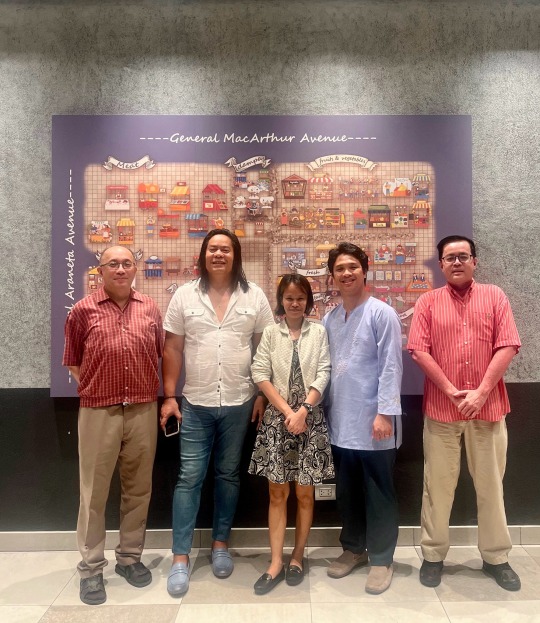
Dinner-Meeting with visitors from MSU-IIT Mahds Cabus Guinto & Lapdus Laguto 🙏
0 notes
Text
#updiliman : Roces Street, between Engineering (Melchor Hall) & AS (Palma Hall)
#unibersidadngpilipinas#universityofthephilippines#up diliman#diliman#attention: former up diliman dormers#as
0 notes
Text
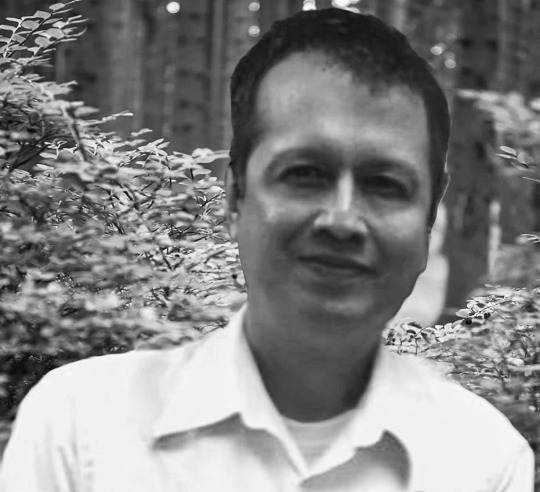
I learned from a post of my colleague, Prof. Gerry T Los Baños, that Prof. Carlos Ojeda Aureus (1947-2024) had passed. Caloy was a retired professor in literature and previous holder of the Diamond Jubilee Professorial Chair at the UP Department of English and Comparative Literature. Armed with experiences as a scholar at El Instituto de Cooperación Iberoamericana (ICI) en Madrid, he taught Latin and Spanish at UP's Department of European Languages. “Nagueños” is his highly acclaimed collection of short fiction on the people and places across Naga. “The Late Comer,” his story, won first prize in the 1996 Carlos Palanca Memorial Awards for Literature. His other stories, “Chinita,” Flake of Fire, Bodies of Light,” “Wings,” “Typhoon,” and especially “The night train does not stop here anymore,” also deserve some more critical attention. Also in dire need of revisiting is Caloy’s The Catholic Imagination, published in the inaugural issue of Humanities Diliman (Vol. 1, no. 1, Jan. 2000 - Jun. 2000: 92-108).
His Ph.D. dissertation in UP entitled “Towards a Dialogical Reading of W. B. Yeats' Vision” (1992) is a pioneering contribution to Anglo-American literary studies from a unique postcolonial subject-position. Together with Retired Professor Lilia Fuentebella Realubit, Professors Paz Verdades Santos, and Tito Valiente, and supported by Naga City Mayor (1988-1998, 2001-2010) Jessie Robredo, Naga City Administrator (now Representative) Gabriel Bordado and Ateneo de Naga President (1988-1999) Fr. Raul Bonoan S.J., Caloy co-organized the first-ever Bikol Writers Workshop in Naga (1993). The workshop proved to be a catalyst for the resurgence of Bikol writing many years later. Caloy was proud of his experiences as a 1970 Silliman National Writers' Workshop fellow with National Artist Ricky Lee, Albert Casuga, Conrad de Quiros, and Wilfredo Pascua Sanchez. He frequently reminisced about Dumaguete and his writing friends in Silliman, including Francis Macansantos, Christine Godinez Ortega, Anthony Tan, and Rowena Tiempo Torrevillas. I will never forget bumping into Caloy over lunch at Casaa, where we purchased takeaway food during the late 1980s and early 1990s, or having coffee and meals with Dr Realubit in UP Diliman's Chateau Verde and his mom, Tita Teresing Ojeda Aureus, around Naga's Plaza Quince Martires and Plaza Rizal during the 1990s. On 19 August 2023, writer and translator Victor Dennis T. Nierva organized a walking tour of Naga based on iconic landmarks identified by Caloy in his Nagueños. Before he passed away, he was working on the biography of Dr. Realubit. Despite his brilliance, Caloy remained kind and very humble. I am sure his students will miss him.
0 notes
Text
#updiliman : acad oval, old tennis courts, film center, UP theater/villamor hall, music/abelardo hall, mass comm/plaridel hall, university avenue, UP press, arki, executive house, nismed, triple E, CS auditorium, math, CS oval
0 notes
Text

Judging this year’s Ustetika Awards for Poetry with Ramil Digal Gulle and Nerisa Del Carmen Guevara.
In a Facebook post dated 22 February 2013 (https://www.facebook.com/share/Si2EmdGVbuB1pDqs/?mibextid=WaXdOe), Playwright and historian Jose Victor Torres wrote that Ustetika’s roots may be traced back to 10 October 1947. The Varsitarian, UST’s official student paper, headlined the announcement of a Varsitarian Literary Contest with a total amount of P1050 cash prizes.
In 1959, The Varsitarian established The Rector's Literary Award to nurture and support young creative writers in the university (https://varsitarian.net/news/20071102/Ustetika).
The Rector's Literary Award was discontinued during Martial Law. In AY 1985-1986, future Varsitarian Editor in Chief Vim Nadera (AY 1987-1988) organized the 1st Ustetika Awards, representing a contraction of "UST" and "estetika" (aesthetics). Ustetika winners for poetry, short fiction, one-act play, and essays in English and Filipino receive cash prizes and certificates.
The Varsitarian revived the Rector's Literary Award in 1991 as part of Ustetika to recognize individuals whose works exemplified the depth and diversity of literature in the university. Director, screenwriter, and playwright Jun Robles Lana is the first post-Martial Law recipient of this award.
In 1997, The Varsitarian introduced the 1st Parangal Hagbong during the 13th Ustetika Awards, honoring the lifetime achievements of National Artist for Theatre and Literature Rolando Tinio and fictionist and former UP Arts and Letters Dean Rogelio Sikat.
Over the years, the Varsitarian and Ustetika produced many writers who have made lasting contributions to Philippine literature and culture. Very grateful to have judged Ustetika’s various categories since 1991.
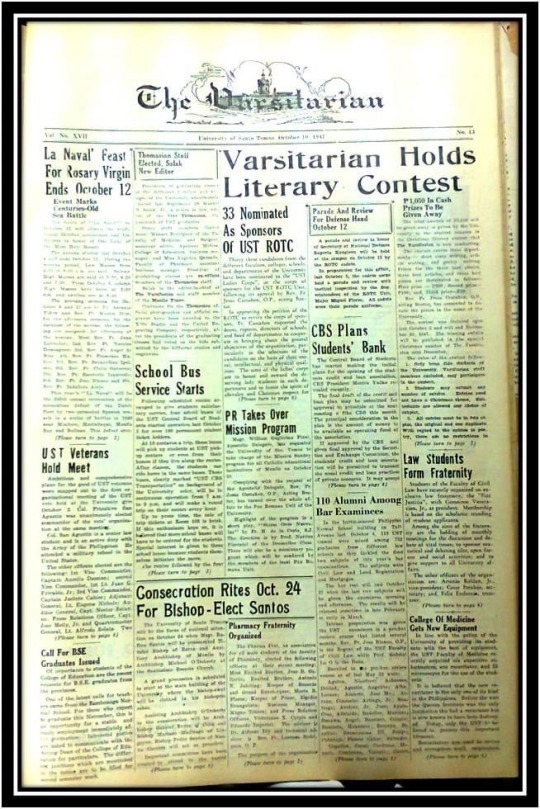

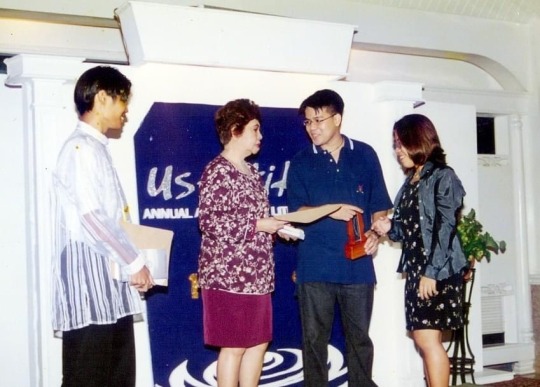
0 notes
Text
UP Diliman: Engineering, Academic Oval, AS Parking Lot, Palma Hall, Pav 1
#unibersidadngpilipinas#universityofthephilippines#up diliman#diliman#attention: former up diliman dormers#as
0 notes
Text

Maraming Salamat uli, UP College of Education Assistant Professor of Early Grades/Early Education Marie Yvette Concepcion-Alcazar, for sending this shot of our Communication I class outside Palma Hall 440, taken by Coly Los Banos 31 years ago (October 1993). I lost most of my pre-digital era photos during the Faculty Center fire (1 April 2016). Looking back, I remember Yvette, Coly, Mao Lukban-Rivera, Jas Medina-Almogino, Grace Flores Osio, Rosela Consolacion Agcaoili, Girlie Paraiso-Mendoza, Cheng Reyes, Donald Sortonis, Rosalinda Bartolome-Barrun, Dani Rose Salazar and their blockmates as a group of driven and determined UP freshies. They demonstrated perfect attendance, actively participated in class discussions and reports, and consistently submitted their papers on time. They delved into books and texts, not just for academic requirements. What set them apart was their genuine eagerness to learn beyond the assigned readings and share these with people around them.
When this photo was taken, I was about to leave for my studies as a Monbusho Research Scholar at the University of Tokyo, unsure if I would ever have the opportunity to return to UP as a teacher. It was a period of growth and learning for my students and myself. Yvette's photo reminds me of the dedication, focus, and passion that defined that chapter of my teaching career. That semester, I really gave my all 🙏
1 note
·
View note
Text

From Yvette Concepcion-Alcazar, bumping into my Comm I class (Educ block), especially Yvette & Mao Lukban-Rivera in the much-lamented CASAA Food Center (October 1993). I was 26 when the photo was taken—my 5th year of teaching in UP 🙏
0 notes
Text
glimpses of summer: UP diliman lagoon, AS parking lot, main library, malcolm hall, sunken garden, vinzons hall
#unibersidadngpilipinas#universityofthephilippines#up diliman#diliman#attention: former up diliman dormers
0 notes
Text
As I strolled along AS Walk yesterday afternoon, I gazed lengthily at the now-empty space where the UP College of Arts and Sciences Alumni Association (CASAA) Food Center once stood. Located behind Benton Hall and Lagmay Hall, it was where I would often grab a bite to eat during my first five years of teaching (1988-1993). The fire that engulfed CASAA on 13 June 2015 left a void across Diliman. It was a place that not only provided affordable and palatable meals to students, faculty, staff, and visitors, but it also served as a meeting point for orgs, group mates, and prospective relationships. The array of kiosks, each specializing in a different type of dish, added to CASAA’s charm. One of my fondest memories was gorging over the lasagna at Pasta House, a dish that became my go-to lunch option for years. Mrs. Reyes, the long-time CASAA manager, chatted with me frequently as I purchased pints of Magnolia Ice Cream after my Wednesday and Saturday classes. CASAA's tragic end saddened me, as it was not just a food center but a place where friendships were formed and memories were made. The lack of proper ventilation and the absence of air conditioning units never deterred the loyal patrons of CASAA, who kept coming back for the sense of community that it provided. The camaraderie was extraordinary. It is a shame that since 2015, UP Diliman students will no longer have the complete "AS experience," of which CASAA is a significant chunk.
#casaa#unibersidadngpilipinas#universityofthephilippines#up diliman#diliman#attention: former up diliman dormers#as
1 note
·
View note
Text
Very sad to learn that Dr. Raul Pertierra (2 July 1941-7 April 2024) has passed on. From Macquarie University, where he was educated and taught initially, to the University of Sydney and the University of New South Wales (UNSW), where he taught for many years, he was pivotal in pushing for Australia-related studies in the Philippines and is one of the pioneering figures in promoting Philippine Studies in Australia. In 1992, with Mark Turner and Lulu Respall-Turner, he co-organized the International Philippine Studies Conference in Canberra. It was unprecedented because participants were culled from experts in and out of Australia, many from Southeast Asian and North American universities.
Over two decades ago, he introduced me to Australian Studies and guided me through my Ph.D. application at the Australian National University (ANU). He was thrilled when I received the ANU Vice Chancellor's Ph.D. Scholarship at the Research School of Pacific and Asian Studies (renamed College of Asia and the Pacific), thanks to his foresight and direction. The night before I left for Canberra, he treated me to dinner and gave me a list of names, emails, and phone numbers of his friends across Australia. The list served me well when I did archival and field research in Brisbane, Melbourne, Perth, and Sydney. Through him, I was introduced to Michael and Leny Pinches at the University of Western Australia, Mina Roces at the University of New South Wales, Deborah Ruiz Wall and her involvement with aboriginal communities at Red Fern, and Mark and Lulu Respall-Turner at the University of Canberra.
More than these, Raul was prolific. His works include The Filipino Migration Experience Global Agents of Change (2023), Anthropology and the AlDub Nation: Entertainment as Politics and Politics as Entertainment (2016), Reflections on the Relevance of the Social Sciences in the Philippines (2014), We Reveal ourselves to ourselves: the new communication media in the Philippines (2013), The new communication media and their effects on Filipino culture and society (2008), The role of everyday culture for a scientific orientation in Philippine society: are the youth any different? (2006), Transforming Technologies Altered Selves: Mobile Phones and Internet Use in the Philippines (2006), Cultural Diversity and Cultural Exchanges in the Framework of Globalization (2004), Science, Technology, and everyday culture in the Philippines (2003), Txt-ing selves: cellphones and Philippine Modernity (as co-author, 2002), The globalization of culture: possibilities and threats (2000), Emancipation within culture (1998), Explorations in social theory and Philippine ethnography (1997), Philippine localities and global perspectives essays on society and culture (1995), and Religion, Politics and Rationality (1988).
In his later years, Raul furthered his teaching, archival, and field research as a Visiting Professor at The Centre for Asian Studies Amsterdam, a joint center of the University of Amsterdam (UvA) and the Free University (VU), and at the Institute of Southeast Asian Studies (ISEAS) in Singapore. In the Philippines, he taught sociology and anthropology at the Ateneo de Manila University, Philippine Women's University, and the Asian Center, UP Diliman. More than twenty years ago, he problematized the breadth and scope of the digital age on the lives of Filipinos. He believed that Filipinos were shaping their social world through new information technologies. This included generating, distributing, and consuming information as a crucial part of the order of things. He foreshadowed specificities of what became an AI future where technology would play a more significant role in shaping society. His insights into the digital age have proven to be accurate over time.
Maraming Salamat Raul. Many of us will remember the legacy you have left behind.
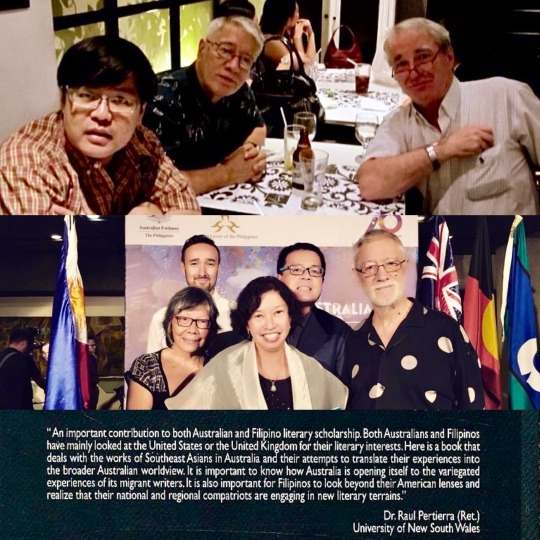
0 notes
Text
UP Professor of Speech Communication TP de Luna turns 50 🥂
0 notes
Text
Quite belatedly, I discovered that Solomon Saprid’s Gomburza (1972) was finally relocated to the area before the National Museum of Fine Arts. As a child, it used to be located at the Manila Cathedral, where my family attended mass frequently. When the cathedral was packed, and we could not find seats, I’d sit at the foot of Saprid’s Gomburza to hear mass from the loudspeaker while my parents and younger brother stood outside near the cathedral’s main door. Sunday after Sunday, I prayed very hard for bullies to go away. I used to be bullied as a child by distant relations in the province, some nasty neighbors near my old home, and some kids at school. I prayed very hard for those bullies to stay away. It turns out I did not have to do anything after praying. As the years went by, they all went away. As a grown-up, bullies come and go in our daily lives. At a certain point, and it may take some time, we don’t have to do much. Nature will take its natural course. Bullies? They will trip. They will go away.
3 notes
·
View notes
Text
living in quezon city for many years and not having much reason to visit manila, i was taken aback by the "skyline" of tondo, binondo, santa cruz, and quiapo. the many skyscrapers that now dominate the cityscape left me wondering about heritage configurations, whatever’s left of it, in that part of the old city.
0 notes